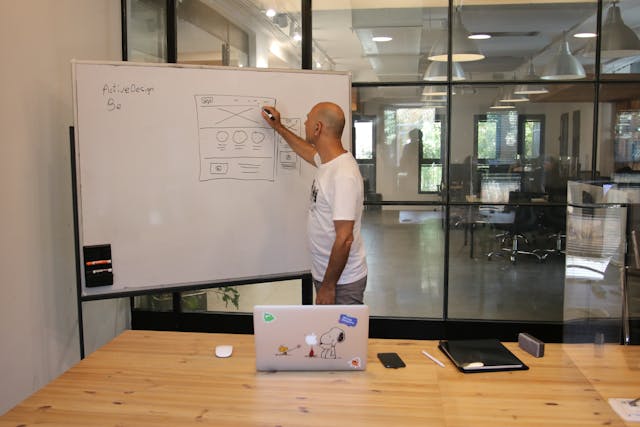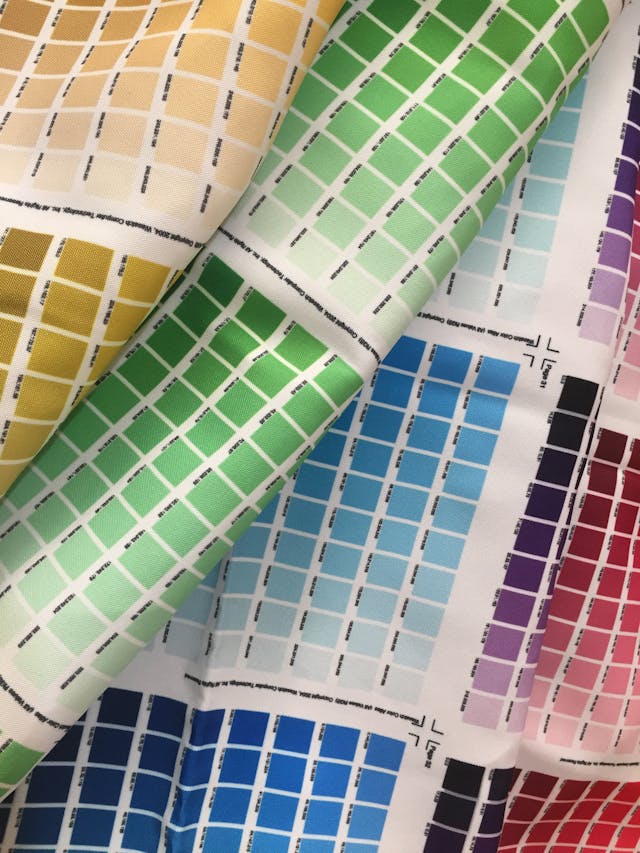If you’ve shown an interest in the UX field, perhaps you’ve also considered embarking on a career path within UX.
Given the high-demand, rewarding nature of UX careers, it’s understandable that you’d want to lend your talents to the UX industry.
The question is, how do you go about securing an entry-level role in the UX industry?
In today’s guide, we’ll answer that question. We’ll explore the skills you need to thrive in multiple UX subsectors and ways you can secure said roles. We’ll also point you in the right direction when it’s time to find entry-level UX jobs!
Skills You Need: UX Designer Skills
Needless to say, in order to secure an entry-level UX designer role, you must exhibit valuable UX designer skills.
Below, we’ve arranged a list of vital hard and soft skills that you’ll need to flourish as a UX designer. From this list, you should identify your strengths and weaknesses to pinpoint areas of refinement. Adhering to the nature of UX design, once you’ve identified areas of improvement, you should practice iteratively polishing your skills.
Vital Hard Skills for UX Designers
- A knowledge of creating prototypes, wireframes, and user flows.
- An understanding of visual and UI design skills.
- A knowledge of how to conduct user research methods like usability testing and how to analyze and implement valuable user-centric data.
- A knowledge of how to conduct market research to aid the UX design process.
- An understanding of essential UX design thinking principles.
- A knowledge of designing information architecture.
- An ability to utilize and implement constructive feedback.
Vital Soft Skills for UX Designers
- Empathy, with regard to understanding target users on a psychological level.
- Critical thinking
- Communication and collaboration with fellow designers, stakeholders, and marketing teams.
- Time management
- Presentation

How To Become a UX Designer
Some aspiring UX designers choose to study UX design at university or college. A formal education could open up more career opportunities, even beyond the scope of UX design, like UX research pathways.
However, studying at a university or college can prove too costly or inflexible. If this is the case, you may wonder how to become a UX designer without a degree. Fortunately, it is possible.
Here’s a brief summary of the steps you should take to become a UX designer:
- Analyze your favorite digital products and decipher what works and what you could improve.
- Enroll in a UX design course like Generalassemb.ly’s Beginner UX Design Course.
- Complete a UX design boot camp like CareerFoundry’s UX Design Program.
- Utilize valuable resources like books, YouTube videos, blogs, and podcasts.
- Work on independent projects.
- Build a professional portfolio containing samples of your work and the reasoning behind your design decisions.
- Connect with UX design communities.
- Market yourself.
- Ask for and implement constructive feedback.
- Practice!
Skills You Need: UX Researcher Skills
Now, we’ll explore the essential skills that a UX researcher must have to bolster the UX design process. Like with UX designer skills, you should identify and work to improve any areas of refinement.
Vital Hard Skills for UX Researchers
- An understanding of various user research methodologies like quantitative and qualitative research. UX researchers must also know which methodologies to employ to generate relevant findings.
- A knowledge of how to plan, organize, and execute research methods like user surveys, user interviews, etc.
- A knowledge of how to collect and interpret data.
- An understanding of UX design, UI design, and the conventional design process.
- A knowledge of how to create user personas.
- An ability to produce empathy maps and user journey maps.
Vital Soft Skills for UX Researchers
- Empathy
- Collaboration and communication
- Active listening
- Critical thinking
- Adaptability
- Time management
How To Become a UX Researcher
Having witnessed the necessary skills to flourish as a UX researcher, you may find yourself gravitating toward UX research careers.
If this is the case, you need to know how to become a UX researcher. By following our brief walkthrough, you can pursue an entry-level role in the UX research subsector.
- Pursue a degree in human-computer interaction, psychology, computer science, information systems, or design. Alternatively, you can enroll in an online UX research course like Google’s Conduct UX Research and Test Early Concepts Course.
- Practice essential skills like A/B testing and analyzing user-oriented data to find patterns and anomalies.
- Get practical experience by working on independent projects.
- Volunteer your UX research skills to small businesses.
- Join competitive software development events.
- Build your professional portfolio.
- Grow your network by joining UX-oriented communities.

Skills You Need: UI Designer Skills
In order to secure an entry-level role as a UI designer, you must demonstrate a slightly different set of skills. Although the soft skills within the UX field often overlap, a UI designer must have distinct technical competencies.
Without the following technical skills, UI designers wouldn’t effectively design the look, feel, and interactivity of a digital product. Here are the types of skills you need to succeed as a proficient UI designer.
Vital Hard Skills for UI Designers
- An ability to conduct visual problem-solving.
- An understanding of the components of graphic design. Typically, this includes a knowledge of visual language, user interface elements, composition, and the creation and modification of visual assets.
- A knowledge of typography.
- A knowledge of color theory, color palettes, and utilizing color in an accessible manner.
- An understanding of UX design and UX research.
- An ability to create wireframes.
- An ability to utilize and implement constructive feedback.
Vital Soft Skills for UI Designers
- Creativity
- Empathy
- Critical thinking
- Open-mindedness
- Adaptability
- Collaboration and communication
- Presentation

How To Become a UI Designer
If you’ve taken a particular shine to UI design, the next step is to become a UI designer.
Here’s a brief guide that’ll walk you through the ways in which you can become a UI designer!
- Study UI design at university. Alternatively, enroll in an online UI design course like the UX Design Institute’s Professional Certificate in UI Design.
- Pay attention to effective UI design, evaluating components you like and components you don’t.
- Utilize resources like books, blogs, YouTube videos, and podcasts.
- Familiarize yourself with graphic design, UX design, UX writing, and UX research.
- Expand your knowledge of core UI design concepts like color theory and typography.
- Practice with UI design tools like Figma.
- Build a professional portfolio as you work on independent projects, explaining your reasoning behind design choices with samples.
- Connect with fellow UI designers or find a mentor.
- Share your work on sites like Dribbble to receive useful feedback, which you can then implement.
Skills You Need: UX Writer Skills
If you find that your passion for copywriting led you to the UX field, UX writing may appeal to you.
Vital Hard Skills for UX Writers
- An ability to create content strategies.
- A knowledge of how to write UX copy that appears appropriately in a digital product’s user interface.
- A knowledge of graphic editing.
- Literacy and language proficiency.
- A knowledge of how to adhere to brand style guides.
Vital Soft Skills for UX Writers
- Empathy
- Inquisitiveness
- Active listening
- Collaboration and communication
- Adaptability
How To Become a UX Writer
If you’ve decided that putting pen to the (digital) page is most appealing, you’ll enjoy becoming a UX writer.
So, how do you go about becoming a UX writer?
- Enroll in an online UX writing course like Uxcel’s UX Writing Course.
- Familiarize yourself with UX research, specifically user personas.
- Utilize free resources like YouTube videos, blogs, podcasts, and books.
- Refine any weak points in your hard and soft skill sets.
- Build a professional portfolio, including samples of your work, the planning behind your work, and a compelling story.
- Share your work with a UX writing community. Once you’ve received useful feedback, implement any necessary changes.
- Continue to expand your knowledge of the UX field while also refining your language proficiency.

Pursuing a UX Design Internship
Applying for a UX design internship means you’ll garner valuable practical experience that you wouldn’t receive in a classroom.
What’s more, you’ll have the chance to refine the skills we’ve talked about in this article. Additionally, by having the practical experience that an internship would offer, you’ll make yourself more marketable when you attend interviews.
Beyond this, it’s also likely that, provided you’ve worked proficiently, you’ll receive a job from the company you intern for.
Below, we’ve organized a list of UX design internships that you should consider pursuing.
Entry-Level UX Jobs: Job Boards
Now, you have a general understanding of what you must do to thrive within the UX industry.
The next step is to make yourself visible. To help you attract prospective hiring managers, we’ve provided a list of job boards for entry-level positions.
The job boards we’ve provided relate to the subsectors of UX that we’ve discussed in today’s guide. From San Francisco to Seattle, you’ll have a range of promising careers to choose from!
Job Boards for Entry-Level UX Designers
Job Boards for Entry-Level UX Researchers
Job Boards for Entry-Level UI Designers
Job Boards for Entry-Level UX Writers
Entry-Level UX Jobs: Finding the Right Role for You
The takeaway from this article is that you should explore and familiarize yourself with the subsectors of the UX industry. You have an interest in creating exceptional user experiences; you just need to decide how you wish to do so.
Whether you gravitate toward designing, writing, or researching for a digital product, you should experiment with multiple areas of UX.
Get a feel for how every subsector of UX interacts with one another to learn more about your desired role. By doing so, you’ll have an extensive, UX-oriented knowledge base that will stand out to hiring managers.
Are you looking for some inspiration to help you start out? Meet Page Flows.
With over 4,500 recordings of revered products, our team’s impressive range of technical and soft skills is indisputable.
With Page Flows, you’ll learn how vital competencies and education combine to deliver first-rate user experiences. Over 1,000 happy customers from esteemed brands can vouch for us!
We started where you are now, searching for entry-level UX jobs. Now, we stand as a testament to unwavering user-centricity and consistent refinement.
Get started today to access our growing library of user flow recordings and finally stay up-to-date with current design trends.





